EXPLORING
THE EROTIC
WONDERLAND
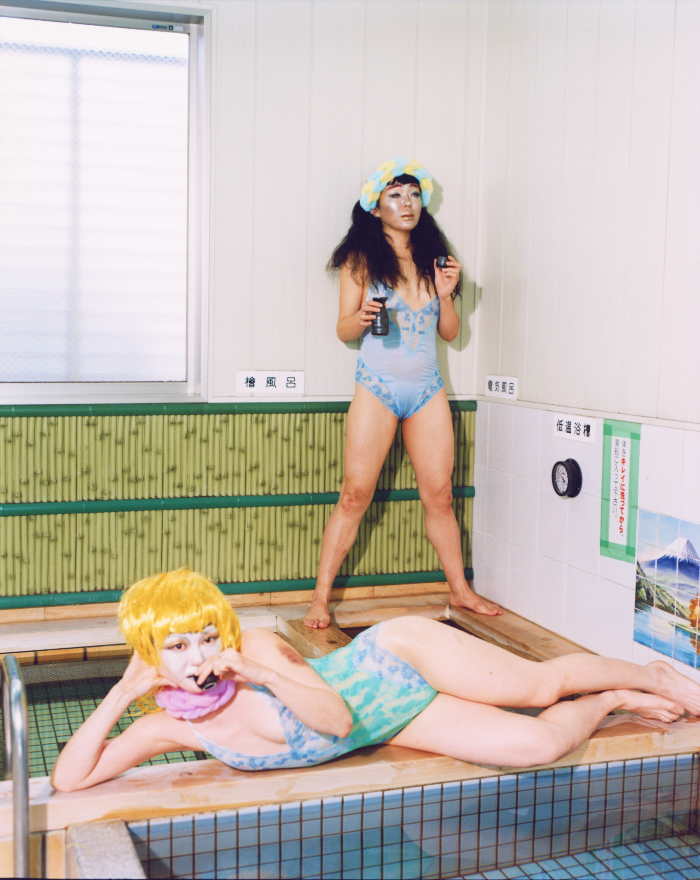
Drinking 3 from 金泉湯, 2021, c-type print
Delving into the mesmerising realm of Japanese anime culture, passionate debates have been ignited by theorists, artists and fans alike surrounding this fantastical, hyper-real creative medium. Expanding the fantasy realms in which individuals can explore their sexual desires. Finding the genre of hentai—anime characterised by overtly sexualized characters and plots—is less of a myriad as the conversation surrounding it (and more like six letters in your website-of-choice’s search bar). Blurring the boundaries of reality, and exploring hidden desires, hentai, much like anime as a whole, has a rich culture within Japanese history, born around the 16th century at the hands of Shunga, a traditional form of Japanese erotic art. However, within the popular culture of today, creators exploring all different sexual fantasies, some ‘perverted’ (the literal translation of hentai/ 変態), and some not, have taken over and created art, alongside exquisite storylines, beyond our wildest dreams.
Overriding the debates and analysis, a vibrant and diverse community has emerged, celebrating anime’s relation to sex and desire as a source of liberation and empowerment. One artist firmly stepping into this captivating realm of Japanese pop culture, and engaging within the discourse is a trailblazer by the name of Motoko Ishibashi. Commanding attention with her extraordinary body of work, Ishibashi’s masterful fusion of contemporary influences, epitomises a culture immersed in a visual wonderland. From enchanting encounters within her environment’s animated characters during her formative years, to her daring exploration of sexuality in art, every stroke of her creative brush and pose before a camera flash tells a story that provokes the senses and the conversations surrounding it.
Hailing from the vibrant city of Nagasaki, Ishibashi has carved out a distinct niche for herself by seamlessly blending the visual languages of Western and Japanese culture across an expansive array of mediums. Whether it’s painting, photography, or sculpture, she fearlessly navigates these diverse artistic landscapes through her own lens. Within these multifaceted endeavours, Ishibashi delves deep into the depths of global consumer culture and the ever-evolving digital realm, examining the intricate dynamics of power, gender, the human body, and the concept of self in our fast-paced, technology-driven society. Imbued by an excellent educational background, having studied at the prestigious Royal College of Art in London alongside earning her degree from Tokyo’s esteemed Keio University, Ishibashi has emerged as a force to be reckoned with within the global art scene. Her mesmerising creations have graced the esteemed halls of galleries across the world, leaving a lasting impression on art enthusiasts and critics alike. As her work continues to flood our social media feeds and ignite conversations in dimly lit bars and workspaces, it is undeniable that Ishibashi is a true catalyst for thought-provoking discussions. In our quest to uncover the enigmatic mind behind these captivating works, we had the privilege of speaking with Motoko Ishibashi herself.
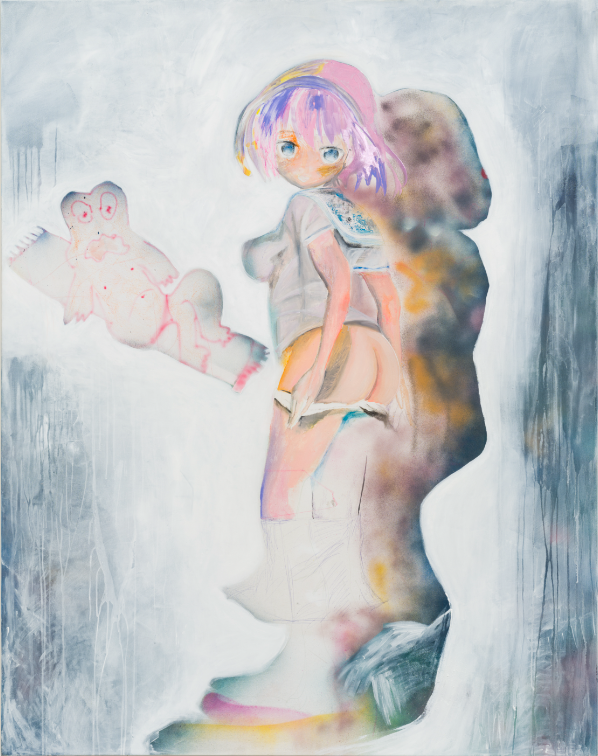
A view, 2022, acrylic and pen on canvas, 150 x 190 cm
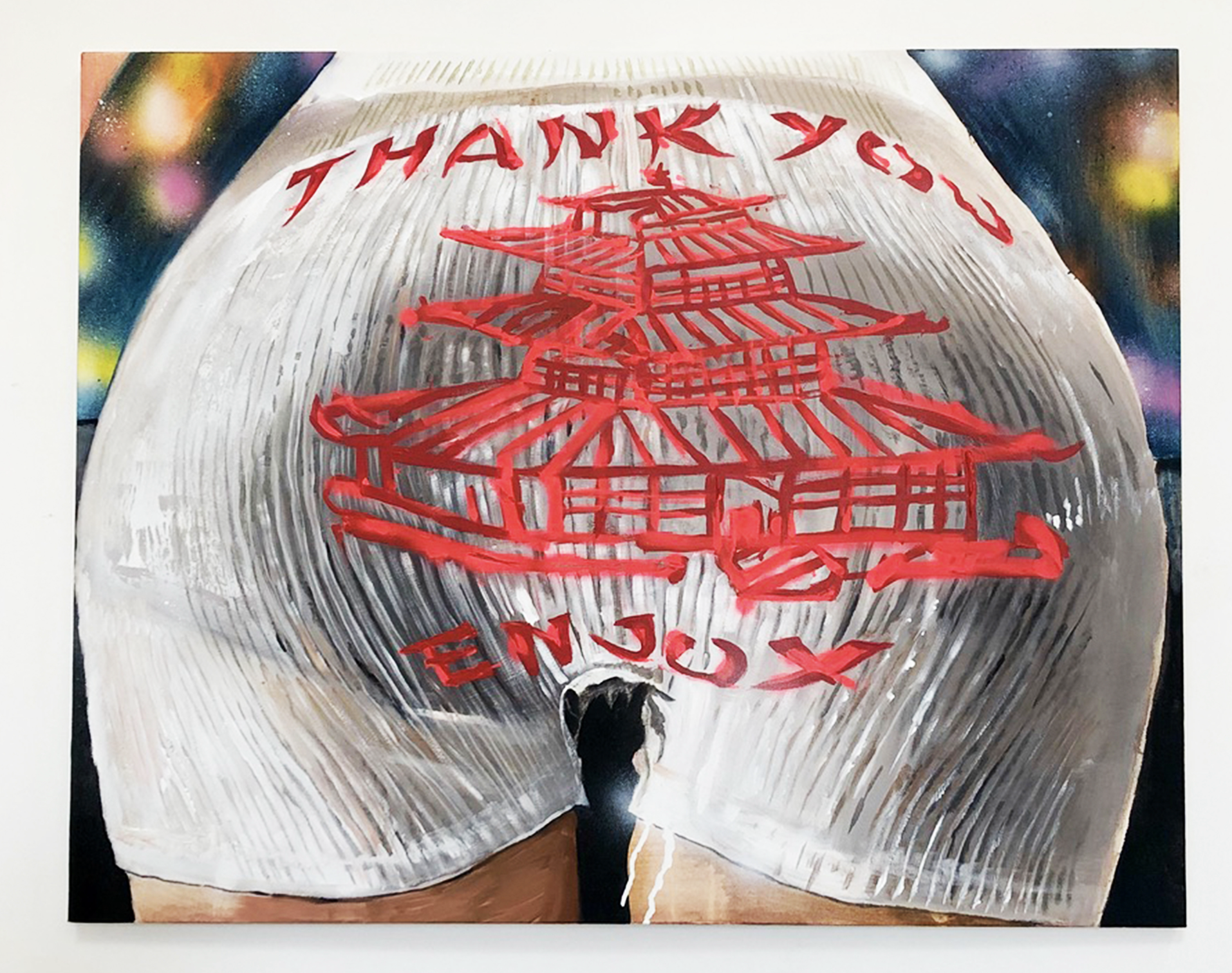
Thank you, Enjoy, 2020, acrylic on canvas, 75 x 95 cm
Growing up on the bustling streets of Japan, Ishibashi begins describing the kaleidoscope of metro billboards and the animated wonders
that surrounded her childhood. Reminiscing the vibrant atmosphere which continuously enveloped her senses, she recalls the symphony of “comical advert music” and lively voices echoing through the air. It was a sensory overload of anime that sparked her imagination and left an indelible mark on her artistic journey. Recollecting these surroundings and the many animated characters appearing within her childhood memories, Ishibashi offers a unique perspective. “The characters, regardless of genders, are idolised to suit their needs, which are mostly intended to be cute as a life stress reliever,” she muses. Yet, she also acknowledges the intricate dance between innocence and adult themes in their portrayal, noting the existence of “mass grey areas of productions which tread the fine line of censorship.” Amid this vibrant cityscape and captivating charm, Ishibashi keenly observed this delicate balance between the objectification of these characters and their role as innocent, “stress-relieving” icons. Her astute observations invite us to delve deeper into the nuanced layers of Japanese pop culture, where cuteness intertwines with complex themes, creating a rich tapestry of artistic expression.
In her childhood, Ishibashi also found solace and inspiration in the plethora of comic books, videos, and games that adorned the shelves of various establishments. Her engagement with these materials was not limited to specific genres or target demographics, but rather she enjoyed reading and watching different anime for all, regardless of category: ‘for boys,’ ‘for girls,’ and so forth. Reminiscing the diverse range of options available, Ishibashi remarks how vast her exposure was: “Many places, like someone’s house, cafe, and so on, always had many comic books, videos, and games on their shelves.” However, within this sea of creative chaos, to which Ishibashi was exposed, she absorbed herself within the diverse genres ranging from black and white films to 90s animations. She fondly recalls how these mediums nurtured her artistic sensibilities through the harmonious coexistence of comedy, fantastical violence and eroticism. And thus, it was during her childhood that Ishibashi’s artistic spirit was forged. She describes the impact of her experiences, stating “they exposed me to a myriad of narratives and artistic styles, expanding my creative horizons and shaping my eclectic approach.” This exposure enabled her to develop a deep appreciation for the diversity within the artistic realm of anime and beyond.
“My work draws directly from groups of fan art cultures, images that seem ‘explicit’ but can be found easily on search engines”, she explains her intrigue towards the transformative power of reproduction. Focussing on images that evolve and change with each iteration, Ishibashi states, “the images I’m interested in are copies of copies which I then copy again.” This iterative process allows her to explore the evolution of an image, each reproduction adding a new layer of interpretation and meaning. Something which can be seen in the mass-produced, and overtime intensified images of women with colossally perky butts and even bigger breasts.
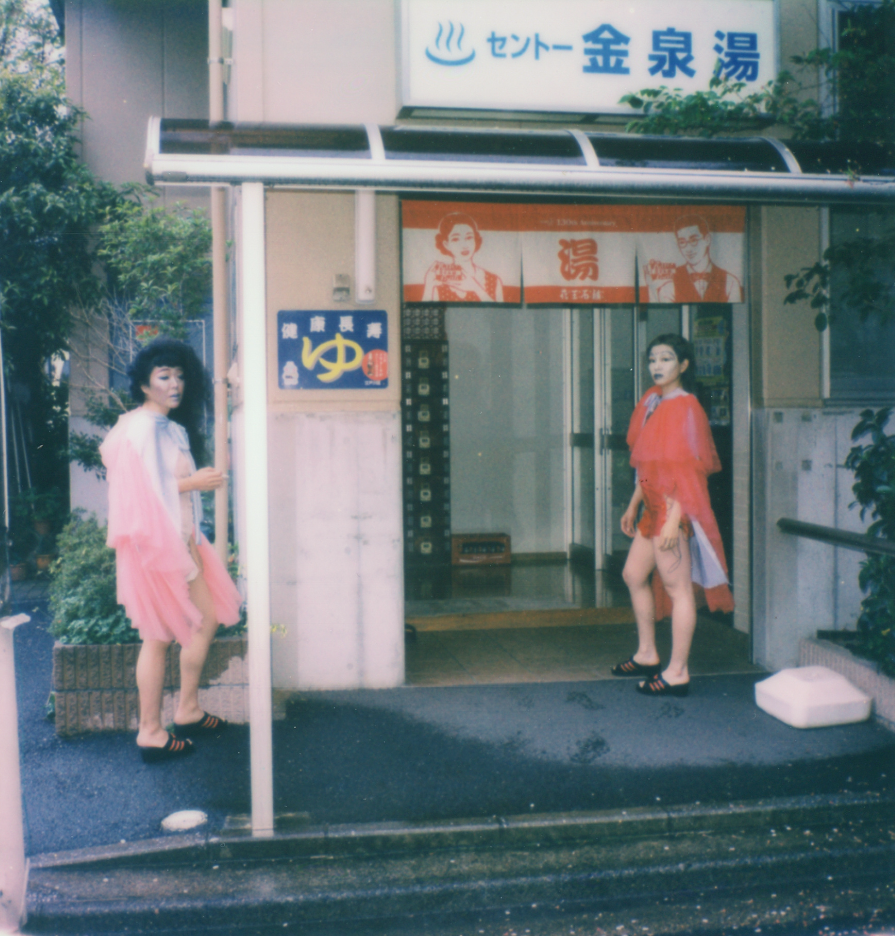
Entrance 4 from 金泉湯, 2021, c-type print
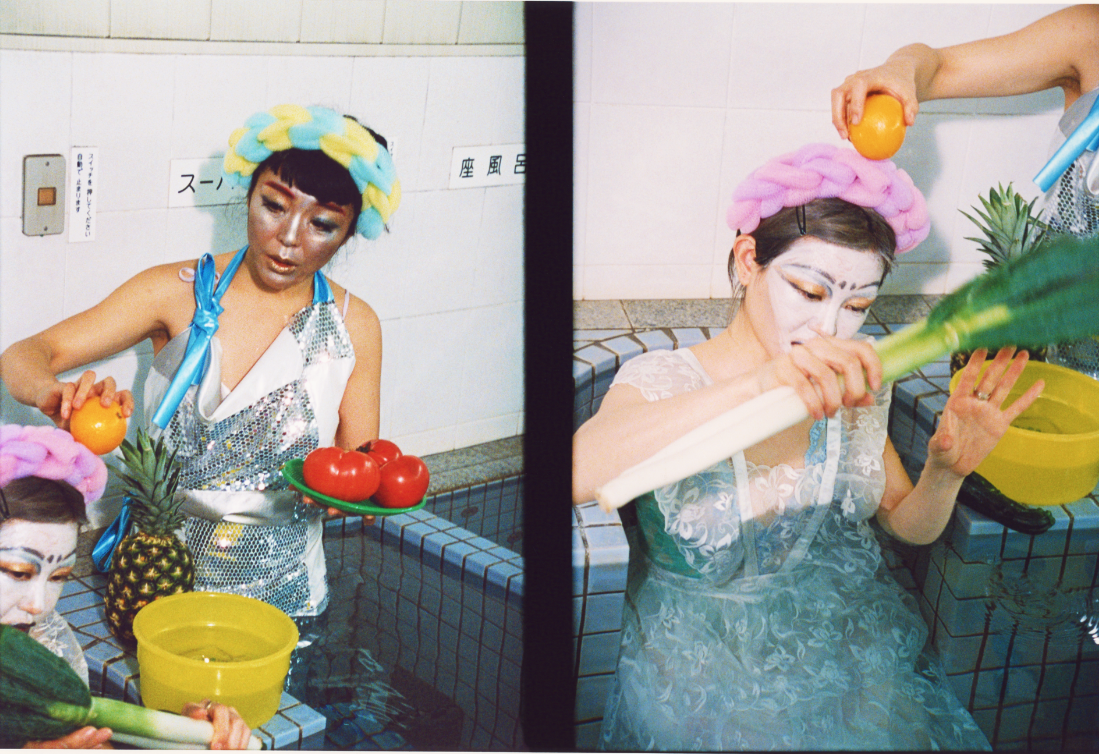
Vegetables 4 from 金泉湯, 2021, c-type print
One particular anime film that left an indelible mark on Ishibashi’s artistic consciousness is Wicked City, the 1987 Japanese adult animated ‘dark fantasy’ action-horror film which tells the story of Earth’s relationship to the ‘Black World’. Powered by hard-bitten protagonist Taki Renzaburo and a sexy demon (/fashion model (of course)), Makie, the pair are willing to go to extreme lengths to protect the peace. “I saw Wicked City when I was a teenager, so it was already an old anime to me,” she recalls. “The animation had a retro impression of the time, but the movements of the characters and some of the sexually violent scenes were sensual and became stuck in my head.’” The impact of Wicked City’s unique blend of aesthetics and provocative elements on Ishibashi’s imagination is evident, and how could they not be? The emergency of the ultra-sensual Spider woman just two minutes into the movie makes for a killer combination. She describes how the images she used for her paintings, coupled with her distinctive cropping and zooming techniques, invoked the intensity of the film and its enigmatic erotic characters. Alongside this, the use of sex as a decoy depicted in Wicked City resonated deeply with Ishibashi’s artistic exploration. In fact, the title of her art piece, Wicked City, derives from the connection she drew between the provocative manner and the intensity and allure of the film, which Ishibashi describes as, “the erotic characters roaming between the human world”.
The human body has historically been a point of inspiration within visual art, going back to the Palaeolithic and Mesolithic eras in which hunting scenes alongside depictions of genitalia with exaggerated sexual characteristics adorn petroglyphs and Venus figurines. However, within contemporary society, this imagery is predominantly patriarchal by nature and unequivocally normative within its binary perspectives on gender and sexuality. But erotic art, like eroticism itself, is a complex, subjective, and ever-evolving experience that exists outside of these binaries. Ishibashi’s involvement in the F*CK ART: the body & its absence exhibition at the Museum of Sex in New York directly possessed an uninhibited urge to explore desire and arousal in our present time beyond the binary, showcasing work such as the Thank You, Enjoy; a playful take on the takeaway boxes used within Asian cuisine in the US feature on a butt. In Hackney, at Guts Gallery, Ishibashi also presented more of her painting series, alongside showcasing a different aspect of her work within her ASSHOLES series, sharing photography shot by Yuto Kudo, as a part of her residency at V.O Curations. Most recently, however, is her exhibition at Sebastian Gladstone—in which Wicked City showcased an evocative transition of Anime into the physical realm through the medium of sculpture.
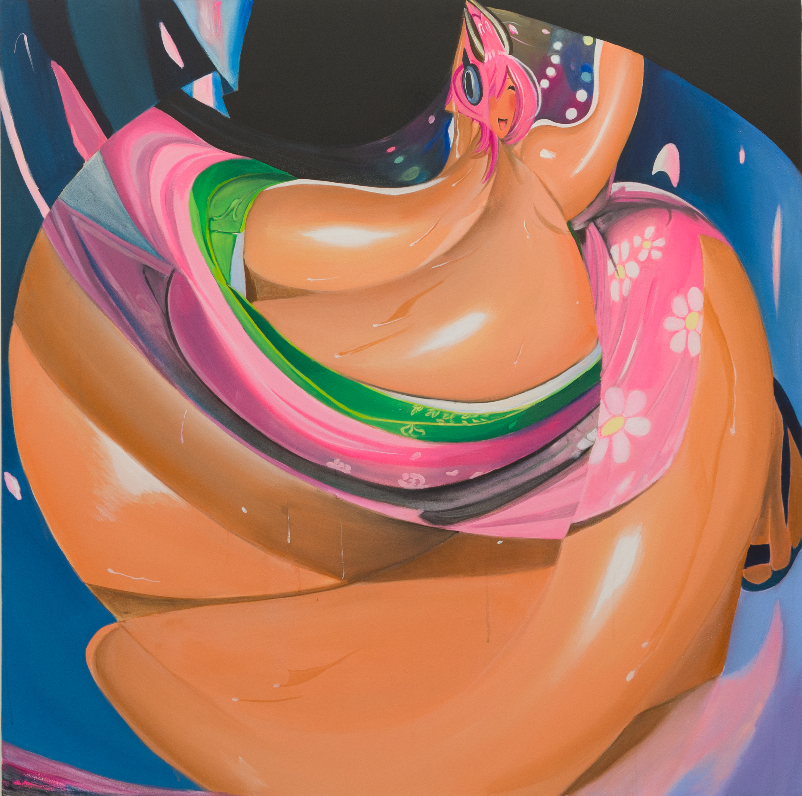
Maki, 2023, acrylic on canvas, 150 x 150 cm
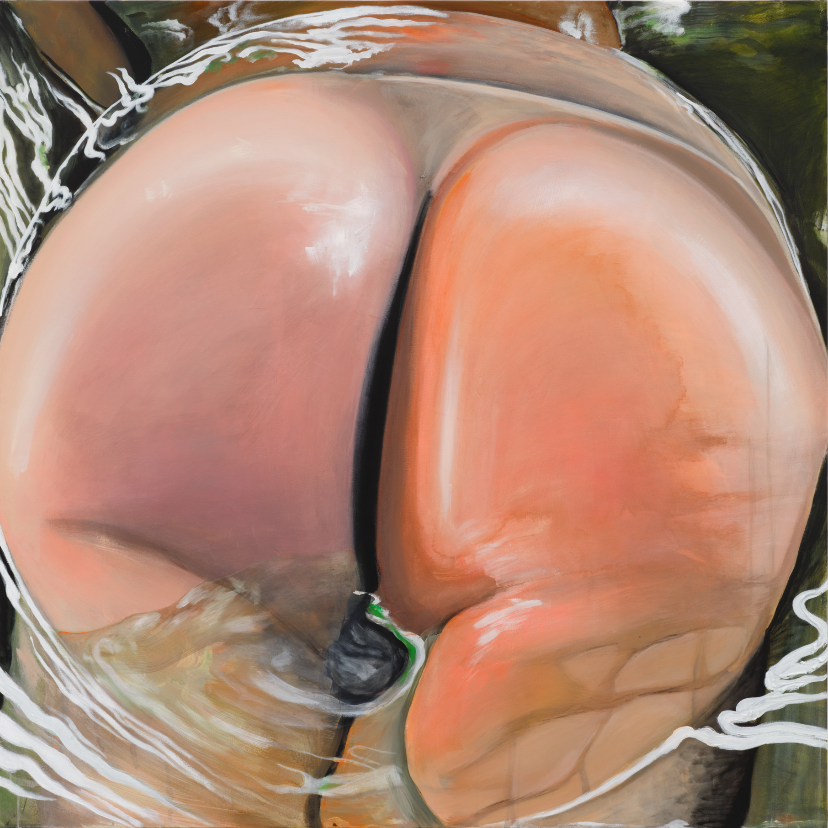
BBB_1, 2022, acrylic on canvas, 150 x 150 cm
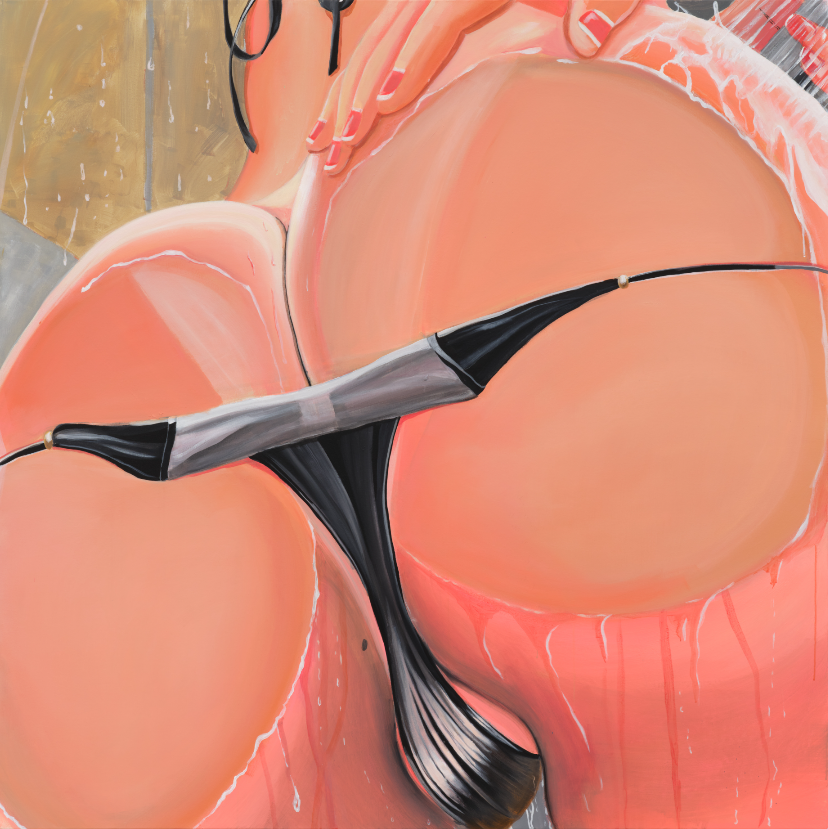
BBB_2, 2022, acrylic on canvas, 150 x 150 cm
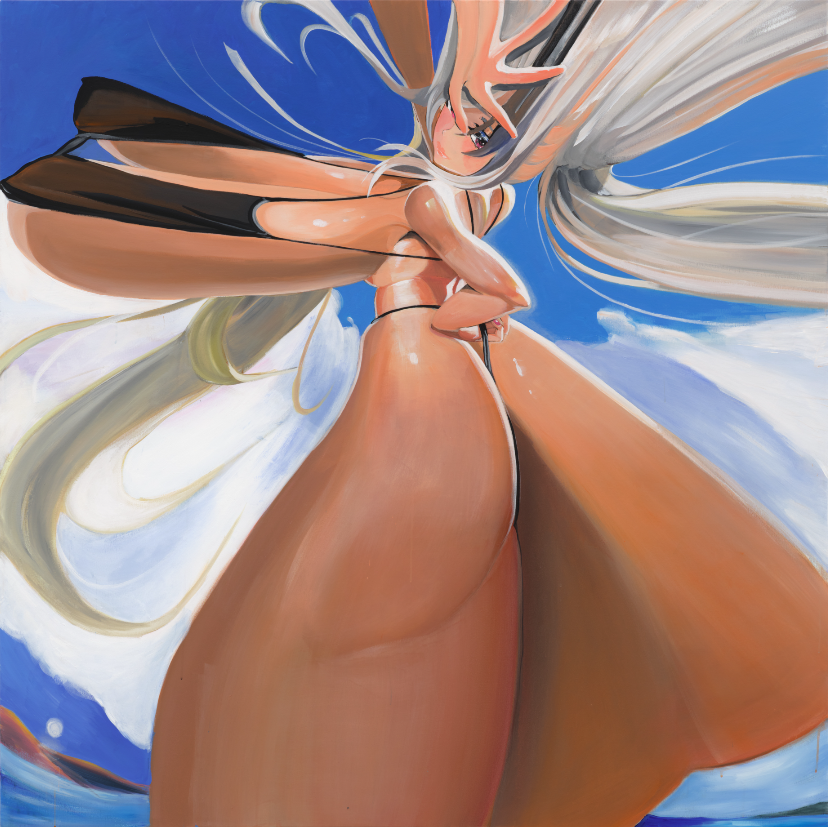
BBB_4, 2022, acrylic on canvas, 150 x 150 cm
That said, alongside being known as Motoko Ishibashi, the artist also goes by an alternate artistic persona, Willowfuck, a creative who engages in a captivating collaborative practice with Robin von Einsiedel that pushes the boundaries of her artistic expression into sculptural works. Also drawing inspiration from the intriguing concepts of anonymity and freedom, Willowfuck’s name originates from an unlikely source—a sex spam email account. Ishibashi explains her draw here to the “anonymity” of spam email, “you have more freedom”, as she does within this second artistic persona. This notion of freedom
becomes a driving force behind the artistic journey undertaken by Willowfuck. At the core of Willowfuck’s creative exploration lies a profound focus on sculptural works as Ishibashi’s artistic vision takes a daring leap by venturing beyond the realm of traditional painting. She embarks on an experimental path, aiming to transform virtual images into physical materiality. In expressing her intent, Ishibashi shares her draw between “virtual images” and “3D materialities”, in this way, she was able to harness a more tangible way to express her artistry, one she believes is more capable than painting can be. This ambitious endeavour also seeks to bridge the gap between the digital and physical worlds, in itself a direct nod to the concern arising within Anime culture, however, in doing so Willowfuck breathes life into ethereal concepts and transforms them into palpable art forms. The evolution of Willowfuck’s artistic expression manifests as a captivating fusion of virtual aesthetics and tangible creations such as the butts seen in her BBB painting series making their way into potteries. Ishibashi’s collaborative practice with von Einsiedel catalyses innovative exploration, as their joint efforts result in an enchanting multisensory experience, emerging from the synergy of imagination and craftsmanship, transporting viewers to a brand-new realm. As our conversation with Ishibashi comes to an end, it is the artist’s fearlessness to engage in conversations surrounding Japanese pop culture and the challenging societal norms which leave me awe-stricken. Through her work, she educates and inspires, acting as a true catalyst for thought-provoking discussions and a force to be reckoned with in the future of today’s contemporary art scene.
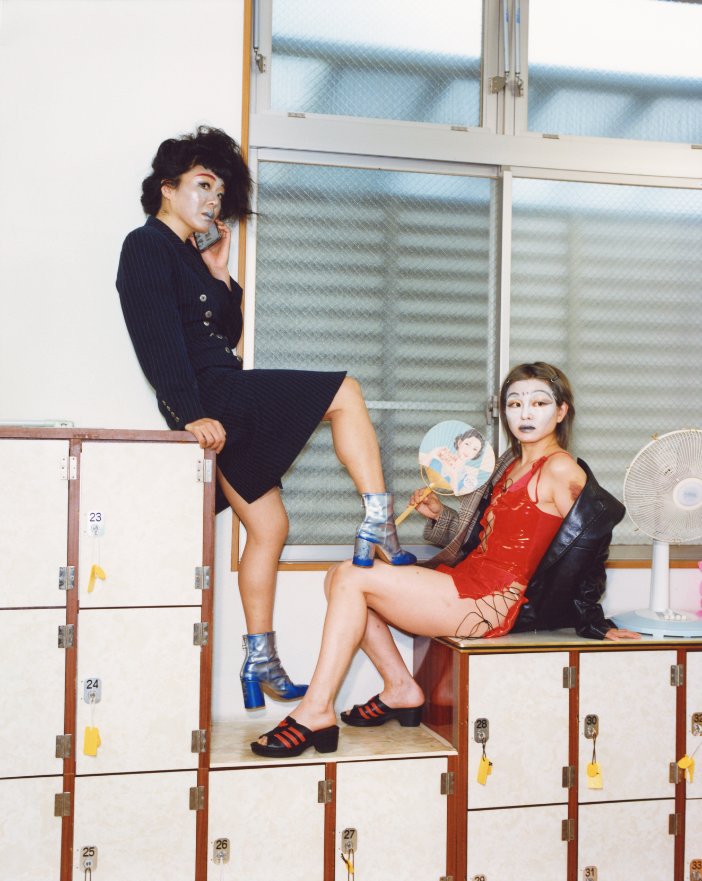
Badminton 1 from 金泉湯 , 2021, c-type print
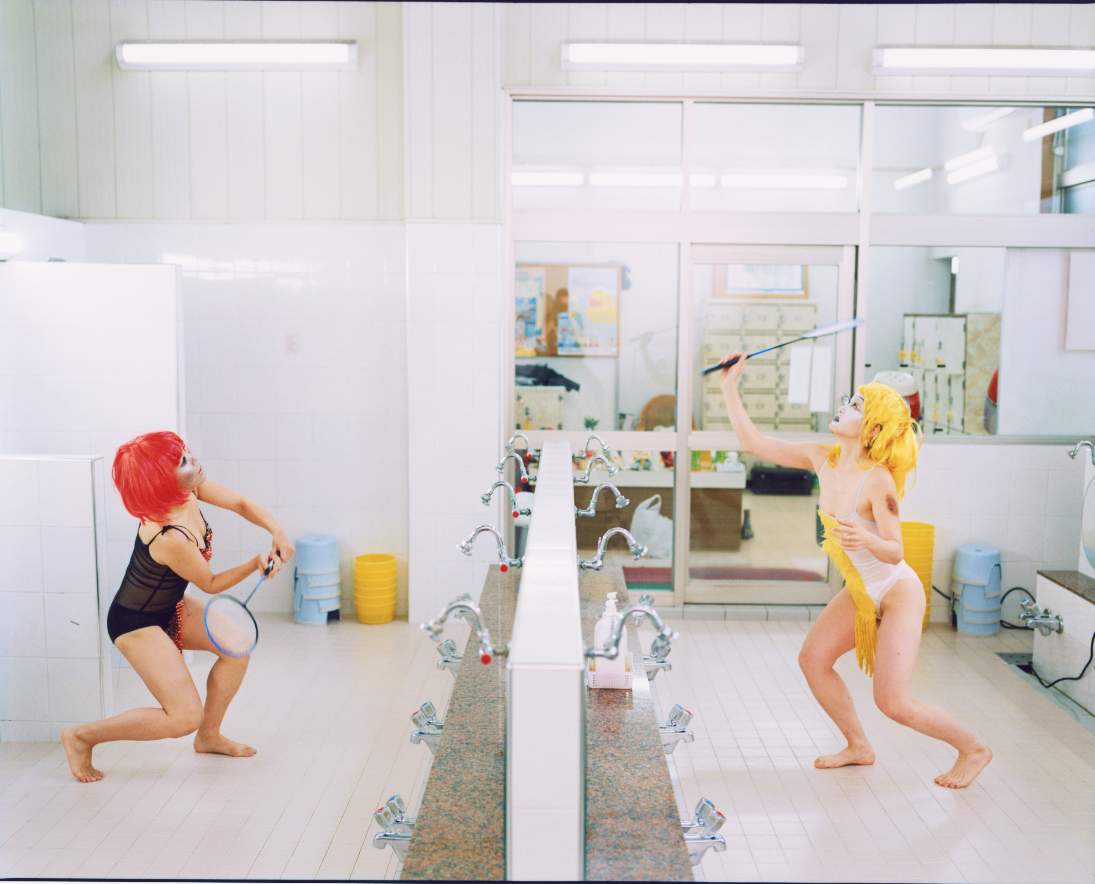
Changing room 1 from 金泉湯 , 2021, c-type print
Words by Grace Powell
Photography by Yuto Kudo
Notifications